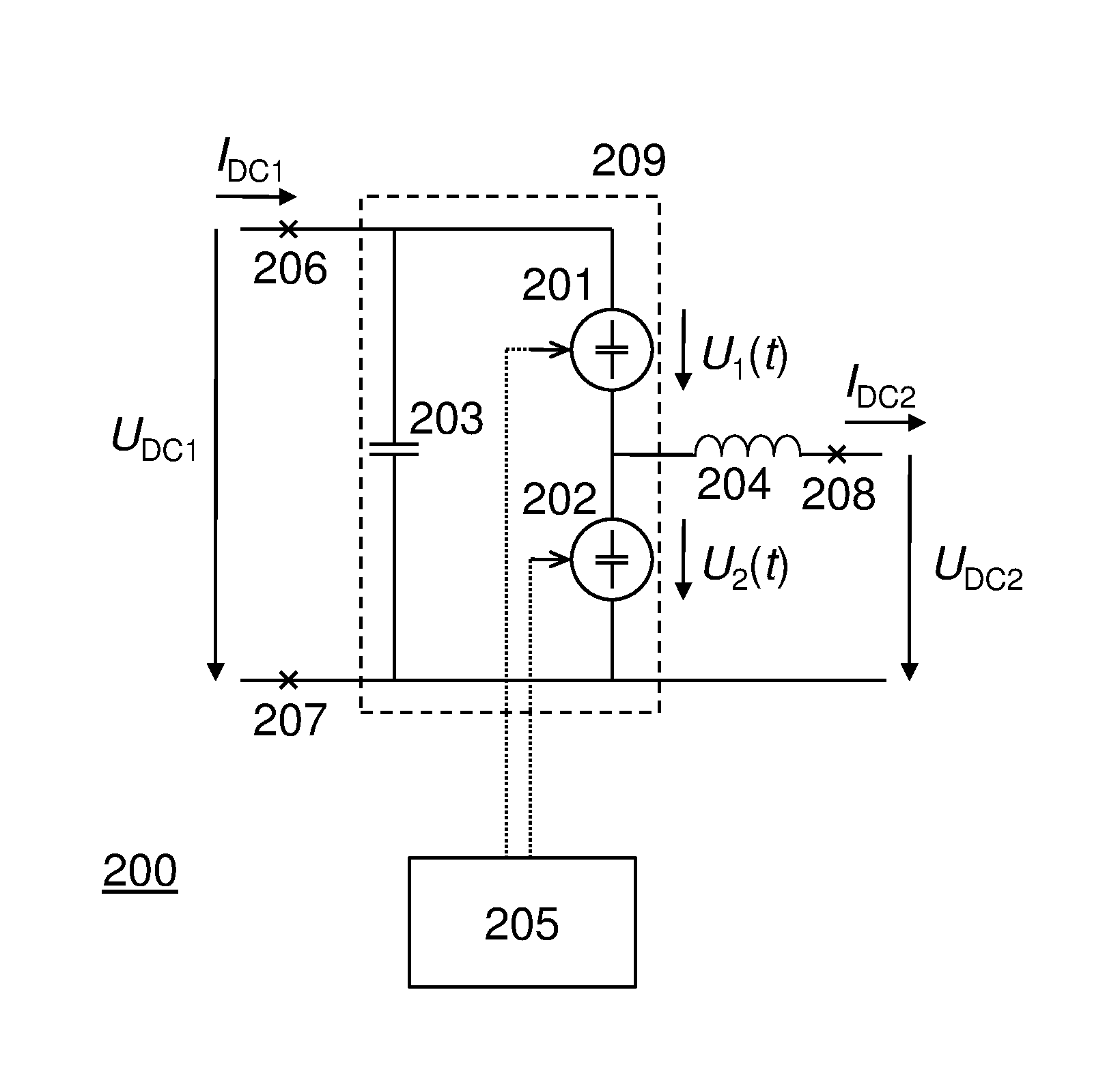Bidirectional unisolated dc-dc converter based on cascaded cells
a cascaded cell, bidirectional technology, applied in the direction of dc-dc conversion, dc-dc conversion, ac conversion apparatus without intermediate, etc., can solve the problems of transformer incurring extra costs and additional power loss, and achieve the effect of eliminating harmonic interaction and eliminating harmonic interaction
- Summary
- Abstract
- Description
- Claims
- Application Information
AI Technical Summary
Benefits of technology
Problems solved by technology
Method used
Image
Examples
Embodiment Construction
[0035]With reference to FIG. 2, a DC-DC converter in accordance with an embodiment of the invention is described.
[0036]DC-DC converter 200 comprises two variable voltage sources 201 and 202 connected in series, a capacitor 203 connected in parallel to the series-connection of voltage sources 201 and 202, as well as an AC filter 204, in FIG. 2 illustrated as an inductance. AC filter 204 may, e.g., be a reactor. Further, converter 200 comprises a control unit 205, for controlling variable voltage sources 201 and 202, i.e., for controlling the voltage U1(t) and U2(t) provided by 201 and 202, respectively. The operation of voltage sources 201 and 202 is elucidated further below. DC voltage UDC1 and DC current IDC1 are provided to circuitry connected to the high-voltage side of converter 200, i.e., to terminals 206 and 207, and DC voltage UDC2 and DC current IDC2 are provided to the low-voltage side of converter 200, i.e., to terminals 208 and 207. UDC1 is provided in parallel to the ser...
PUM
 Login to View More
Login to View More Abstract
Description
Claims
Application Information
 Login to View More
Login to View More - R&D
- Intellectual Property
- Life Sciences
- Materials
- Tech Scout
- Unparalleled Data Quality
- Higher Quality Content
- 60% Fewer Hallucinations
Browse by: Latest US Patents, China's latest patents, Technical Efficacy Thesaurus, Application Domain, Technology Topic, Popular Technical Reports.
© 2025 PatSnap. All rights reserved.Legal|Privacy policy|Modern Slavery Act Transparency Statement|Sitemap|About US| Contact US: help@patsnap.com



